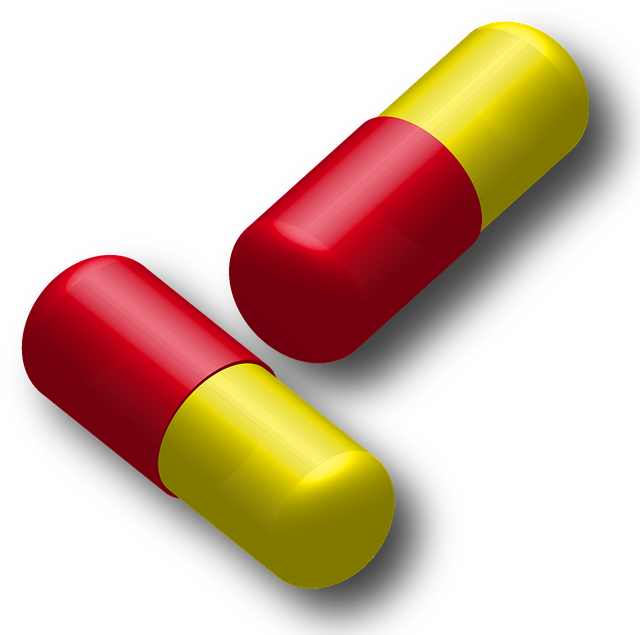Contrast therapy, using alternating hot and cold treatments, significantly aids muscle recovery by reducing inflammation, enhancing blood flow, flushing metabolic waste, and minimizing internal inflammation. Effective for athletes and post-surgical individuals, it accelerates healing, alleviates pain, and shortens recovery times, making it a valuable tool in sports medicine and injury rehabilitation.
Contrast therapy, an ancient practice making a modern comeback, offers a powerful tool for accelerating injury rehabilitation. By alternating between hot and cold temperatures, this technique stimulates blood flow, reduces swelling, and alleviates pain. This article explores the science behind contrast therapy’s anti-inflammatory effects, its crucial role in targeting swelling and pain during rehabilitation, and effective techniques to optimize muscle recovery, making it an indispensable tool for anyone seeking efficient muscle recovery.
Understanding Contrast Therapy: A Powerful Tool
Contrast therapy, a powerful tool in sports medicine and rehabilitation, involves alternating between hot and cold treatments to stimulate blood flow and aid in muscle recovery. This natural method has been shown to significantly reduce inflammation and swelling associated with injuries, making it an effective approach for athletes and individuals seeking faster healing. By exposing the affected area to extreme temperatures, contrast therapy promotes circulation, helps flush out metabolic waste products, and reduces muscle stiffness, all of which contribute to a more efficient recovery process.
For those recovering from sprains, strains, or post-surgical procedures, incorporating contrast therapy into their rehabilitation routine can offer numerous benefits. The heat increases blood vessel diameter, enhancing oxygen and nutrient delivery to the injured site, while the cold constricts vessels, reducing internal inflammation. This dual action accelerates the body’s natural healing mechanisms, ensuring a faster return to physical activity for those seeking optimal muscle recovery after an injury.
The Science Behind Its Anti-Inflammatory Effects
Contrast therapy, an ancient practice with modern scientific backing, has gained recognition in the field of sports medicine and injury rehabilitation. Its anti-inflammatory effects are well documented, making it a valuable tool for muscle recovery. The science behind this method lies in the principle of alternating hot and cold temperatures, which triggers a series of physiological responses in the body. When you expose injured tissues to heat, blood vessels dilate, increasing blood flow and delivering essential nutrients to aid healing. Conversely, applying cold stimulates vasoconstriction, reducing blood flow and minimizing swelling.
This natural process helps reduce inflammation, a common obstacle in muscle recovery. By controlling blood circulation, contrast therapy can speed up the body’s natural healing mechanisms. Research suggests that it may reduce muscle soreness, promote tissue repair, and enhance overall recovery after intense physical activities or injuries. The science behind contrast therapy offers a safe and effective approach to managing swelling and supporting the rehabilitation process for athletes and individuals seeking faster and more efficient muscle recovery.
Targeting Swelling and Pain in Injury Rehabilitation
Injury rehabilitation often involves managing swelling and pain, which can hinder an individual’s recovery process. This is where contrast therapy proves to be a valuable tool. By alternating between hot and cold treatments, it offers a targeted approach to reduce inflammation and alleviate discomfort. The heat increases blood flow, promoting the body’s natural healing mechanisms, while the cold helps constrict blood vessels, reducing fluid buildup and swelling.
Contrast therapy for muscle recovery is particularly effective as it can expedite the reduction of muscle spasms and rigidness post-injury. This method allows athletes and individuals undergoing rehabilitation to experience faster relief from pain, enabling them to resume their physical activities sooner while ensuring a more comfortable and efficient healing journey.
Effective Techniques for Optimal Muscle Recovery
Contrast therapy, a powerful tool in injury rehabilitation, plays a pivotal role in optimal muscle recovery. This therapeutic approach involves alternating between hot and cold treatments, stimulating blood flow and promoting healing. During an ice bath or cryotherapy session, constricted blood vessels reduce inflammation and swelling, alleviating pain associated with muscle soreness. Subsequently, warm therapies like heat packs or saunas cause vasodilation, enhancing circulation to deliver essential nutrients and oxygen to repaired tissues, expediting the recovery process.
By combining these contrasting temperatures, contrast therapy helps flush out metabolic waste products accumulated in damaged muscles, reducing stiffness and accelerating the body’s natural repair mechanisms. This method is particularly effective for athletes or individuals recovering from intense workouts, overuse injuries, or post-surgical procedures. Incorporating contrast therapy into a comprehensive rehabilitation regimen can significantly shorten recovery timelines and enhance overall muscle health.
Contrast therapy emerges as a powerful ally in injury rehabilitation, offering significant benefits for reducing swelling and alleviating pain. By understanding the science behind its anti-inflammatory effects and employing effective techniques, individuals can optimize muscle recovery. This holistic approach integrates contrast therapy into their rehabilitation regimen, ensuring faster healing and improved overall outcomes for those seeking to regain strength and mobility after an injury.
